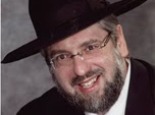 By Rabbi Pinchos Lipschutz
By Rabbi Pinchos Lipschutz
Sunday was a historic day. That word is over-used almost to the point of rendering it meaningless, yet everyone who joined in the chanukas habayis of Yeshiva Darchei Torah’s new campus will admit that Sunday’s date will long be remembered. Reflecting back on the events of the day, it is not far fetched to say that it was a case of “Ka’asher zeh nofeil zeh kom,“ referred to by Rashi in Parshas Toldos (25:23).
Who knows if it wasn’t the zechus of the chanukas habayis and Yeshiva Darchei Torah’s dedication to Torah – its study and support, and the respect for those who excel in both – that the event signified which caused the scales of Shomayim to tip in favor of Bnei Yaakov and against the Yedei Eisav and Yishmoel.
Even ignoring what was taking place at the same time at the other end of the world, what transpired Sunday in Far Rockaway stands out from what has thankfully become a steady parade of Torah celebrations, including groundbreakings, chanukas batim, gala siyumim, and yeshivos and Bais Yaakovs bursting at their seams, as well as a never-ending stream of brisos, bar mitzvos and weddings.
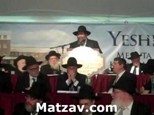 Sitting at the chanukas habayis for the magnificent new campus of Yeshiva Darchei Torah in Far Rockaway, I am sure that I wasn’t the only one who felt that I was participating in something historic.
Sitting at the chanukas habayis for the magnificent new campus of Yeshiva Darchei Torah in Far Rockaway, I am sure that I wasn’t the only one who felt that I was participating in something historic.
The story of Darchei Torah is that of a small cheder in a quiet suburban community, which led to the founding of a mesivta, and then a yeshiva gedolah, and ultimately a vibrant unit comprising a kollel as well, with the community around it having flowered into an ir ve’eim b’Yisroel in the process. In the story of Darchei Torah, we see the story of our nation’s history and a reflection of its destiny.
Beaten, bruised, and fighting for breath, Am Yisroel rises from the dust and yearns for rebirth, providing the opportunity for heroic talmidei chachomim to transmit the Torah in the bleakest of landscapes, and in the most trying of times and circumstances, for they know that without Torah, there is no life. Inevitably, the Torah takes root in its new, hardscrabble surroundings, Yiddishkeit returns to life, and bare branches spared from the fire of Eisav begin to blossom.
Seventy years ago, when Jews who were about to die al kiddush Hashem scratched with their blood words of faith, they proclaimed, as they were b’gei tzalmovess, their belief that one day Klal Yisroel would witness events such as the one which took place on Sunday. Though they were being led to slaughter, they believed that, one day, Yiddishkeit would rise again. Yidden would survive, marry, and have children, and with mesirus nefesh, families would establish communities with a Torah infrastructure, Netzach Yisroel lo yeshakeir.
The fact that we merited gathering around a Torah structure of such splendor, in such a wonderful community of Torah and chessed, is a resounding cry of the realization of prophecy and belief. It is the storyline of our history, up until that ultimate revival, b’meheirah b’yomeinu.
Yes, the world around us shudders in revolution. The economy teeters. Leadership is wanting. Evil and terror bare their tentacles. Our enemies do not rest from seeking to annihilate us, but Klal Yisroel is no longer in the dust. The Torah world has bounced back. We work at preparing the world for the geulah.
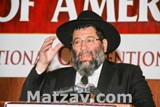 Sitting amongst throngs of warm-hearted Yidden at the chanukas habayis, I found myself contemplating a way in which the festivities differed from many others. Most public events, particularly of the institutional sort, feature guests of honor. At this event, there was an outpouring of chizuk and joy, and everyone there was a baal simcha. Everyone with a child in the school was a baal simcha. Every rebbi or morah in the school, everyone who is lucky enough to be a student in that school, everyone who merits to live in that beautiful community, and everyone who believes in the truth and permanence of Torah – they were all the baalei simcha on Sunday.
Sitting amongst throngs of warm-hearted Yidden at the chanukas habayis, I found myself contemplating a way in which the festivities differed from many others. Most public events, particularly of the institutional sort, feature guests of honor. At this event, there was an outpouring of chizuk and joy, and everyone there was a baal simcha. Everyone with a child in the school was a baal simcha. Every rebbi or morah in the school, everyone who is lucky enough to be a student in that school, everyone who merits to live in that beautiful community, and everyone who believes in the truth and permanence of Torah – they were all the baalei simcha on Sunday.
There were other baalei simcha, other guests of honor, at the festivities. It was a tribute to Rav Shraga Feivel Mendlowitz and a celebration of all those who gave their lives to establish proper Torah chinuch in America.
You see, many of us, members of American Jewry, are relative newcomers to these shores, perhaps two or three generations removed from the blood-soaked soil of Europe. Our ancestors fled to this country to stay alive. They arrived here, in most cases, broken, poor, hungry, lost, and mourning the life left behind in the old country. They worried about their present and their future. They worried about whether they would be able to hold onto their children. They worried about how they would make ends meet. They feared that Yiddishkeit as they had known it would never survive in the treifeneh medinah of America.
Following the war, Torah Judaism was given little chance of survival. Although there were a couple of yeshivos, most Jewish children were educated in public school and became lost to their people. Not everyone was ready to give up, and many people fought hard, with great mesirus nefesh, to continue the glorious chain. They scraped together pennies and established yeshivos and day schools for their children. When frum elementary schools only existed in New York City, giants such as Rav Shraga Feivel Mendlowitz burst forth on the scene and dreamed of opening schools across the country.
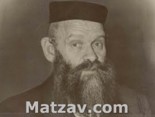 The scoffers scoffed, but the dreamers and the die-hards did everything in their ability to recreate a lost world. They weren’t given much of a chance and the going was very rough.
The scoffers scoffed, but the dreamers and the die-hards did everything in their ability to recreate a lost world. They weren’t given much of a chance and the going was very rough.
In order for Torah and avodah to prosper, you need gemillus chassodim. You need people who will subjugate their own wants and desires to that of the community and to the growth of Torah and avodah. You need people who are selfless in their pursuit of educating the masses on the benefits and beauty of Torah and avodah. Thankfully, this country has been blessed with such people, and it is because of them that Torah Judaism flourishes once again, mere decades after having come so close to decimation.
When others were apathetic and despondent, these heroes refused to be affected by the melancholy of the moment and devoted themselves to rebuilding what had been destroyed. Some laid the groundwork, others provided the financial wherewithal to make it possible, while yet others inspired people to believe it was possible and not to lose faith.
The culmination of this dream, a yeshiva campus that can rival those of Ivy League universities and prestigious institutions, and one bursting with enthusiasm for Torah and Yiddishkeit, is a confluence of so many facts and the gifts of so many. Chief among them, however, was the architect of it all, Rav Shraga Feivel, the innovator who saw the sum total when others could barely visualize parts.
What Rav Yaakov Bender, fueled by the visions, hopes and dreams of many cholmim and baalei mesirus nefesh who preceded him, shows us is that optimism overcomes negativity and cynicism. Like others who have succeeded, he demonstrates through what he has been able to accomplish that one who sets himself on the proper path and works without ulterior motives, but rather l’sheim Shomayim, can tap into the blessings Hashem has provided us. And look how far we have come. With the siyata diShmaya that our community has been blessed with, we not only have the talmidim to fill the huge botei medrash and multiple classrooms, the rabbeim who invest their very beings in filling those rooms with light, and the roshei yeshiva and administration members to lead the flourishing operation. We are blessed with another gift as well: the baalei batim, the lay leadership, with hasagos and spiritual dimensions, to appreciate that the surest way to invest in Klal Yisroel is to invest in Torah chinuch.
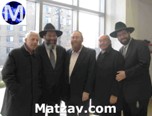 The event on Sunday was a celebration of those roshei yeshiva who believed, who worked assiduously to create an infrastructure, an American yeshiva world, to replace the one that had been snuffed out. It was a celebration of maggidei shiur who toiled late night after late night, committed to giving the American yeshiva bochur the same depth and breadth of Torah learning as his European predecessors.
The event on Sunday was a celebration of those roshei yeshiva who believed, who worked assiduously to create an infrastructure, an American yeshiva world, to replace the one that had been snuffed out. It was a celebration of maggidei shiur who toiled late night after late night, committed to giving the American yeshiva bochur the same depth and breadth of Torah learning as his European predecessors.
It was a celebration of an ideal, one which marked Darchei as unique from the start. An early supporter and friend, Mr. Lloyd Keilson, recalled joining Reb Yisroel Bloom and Rabbi Mendel Goldberg when they went to offer Rabbi Bender the job of menahel.
“Rabbi Bender insisted that Torah and chessed aren’t mutually exclusive, and that we could produce real talmidei chachomim who are also genuinely compassionate, responsible people. Reb Yisroel was convinced and he gave it a chance. That was the day that Darchei became what it is.”
True to his mandate, Rabbi Bender created an island where Torah was made accessible to all. The gifted student and the budding scholar were provided the finest, most dedicated rabbeim. The weaker students weren’t forgotten, nor were those broken in body, but whole in spirit, who wished only to be taught Torah, despite their wheelchairs or hearing aids or poor communicative abilities.
In the process, the trailblazers at Darchei taught the American Torah world an important lesson. Not only did those stronger students, the metzuyanim, not lose out from the presence of the weaker students, but they gained from it. The Darchei talmid was possessed of a certain empathy and sense of achrayus that marked him as unique, having incorporated not just havonas haTorah, but also the ruach of Torah, into his heart.
The Darchei talmid would develop a respect for every single Yid, despite impairments or limitations, perceiving that, underneath we are all the same and deserving of the same treatment.
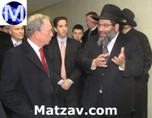 Darchei had succeeded, just as Rabbi Bender had predicted, in creating real bnei Torah, who were also compassionate, responsible Yidden.
Darchei had succeeded, just as Rabbi Bender had predicted, in creating real bnei Torah, who were also compassionate, responsible Yidden.
And the Torah world took note. In fact, it was the Novominsker Rebbe, in his remarks at the chanukas habayis, who said that it may very well be that the Hashgacha Elyonah caused such amazing accomplishments for this mosad because of its dedication to chessed as well as to Torah, as the posuk states, “Ki omarti olam chessed yiboneh.” He said that the school’s success “strikes a chord of chizuk in emunah.” Indeed, it does.
The outpouring of love and appreciation at Sunday’s simcha, and the resounding expression of hakoras hatov from the throngs of attendees, were thus no surprise.
Celebrating also were Rav Shmuel Berenbaum and Rav Elya Svei, zichronam livracha, who inspired and fueled the efforts that went in to making Darchei the mosad it is. Rav Bender and Rav Shlomo Avigdor Altusky, both talmidim of Rav Shmuel, never stopped consulting their rosh yeshiva and continuously conducted themselves as talmidim do, until his last day.
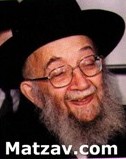 Rav Elya loved what Rav Bender was doing for Far Rockaway and, when in the neighborhood, would use the opportunity to visit the ever-growing yeshiva. As one who remembered that first generation and had learned under Rav Dovid Bender in Mesivta Torah Vodaas, he was equipped to explain the extraordinary success of the mosad. “It is zechus avos,” he said, with the clarity of a gadol and the perception of an early observer of the American Torah scene, seeing the development of the yeshiva and community around it as an outgrowth of the efforts of Rav Dovid and Rebbetzin Basya Bender, a new chapter in the book they had helped author: American Torah life.
Rav Elya loved what Rav Bender was doing for Far Rockaway and, when in the neighborhood, would use the opportunity to visit the ever-growing yeshiva. As one who remembered that first generation and had learned under Rav Dovid Bender in Mesivta Torah Vodaas, he was equipped to explain the extraordinary success of the mosad. “It is zechus avos,” he said, with the clarity of a gadol and the perception of an early observer of the American Torah scene, seeing the development of the yeshiva and community around it as an outgrowth of the efforts of Rav Dovid and Rebbetzin Basya Bender, a new chapter in the book they had helped author: American Torah life.
On Sunday, we celebrated Rav Shlomo Freifeld, who arrived in Far Rockaway armed with boundless optimism, determined to plant Torah beyond the avenues of Brooklyn. It was he who encouraged Reb Yisroel Bloom in Darchei’s early days and, in fact, it was he who, appreciating the many ‘drachim’ necessary to teach Torah to different types of people, coined the name Darchei Torah.
Surely, all those mechutanim looked down from Shomayim and shared nachas at how far we’ve come and how the work they started is being carried on.
And from another angle, it was a celebration of many who are among us, including Rav Binyamin Kamenetzky, who arrived in bucolic Long Island not just as a summer guest, but as an envoy of his own great father, determined that there, too, Yidden would have a school where their sons could receive a proper chinuch and upbringing. Undaunted by the odds, he ventured beyond comfortable Brooklyn on his own, knowing that Torah is a morashah kehillas Yaakov.
It was a celebration of the early Torah Umesorah pioneers, Dr. Joseph Kaminetsky and Rabbi Bernard Goldenberg, hardy souls who traversed this country from east to west and north to south, pied pipers promoting a dream.
It was a celebration of Darchei’s baalei batim, their stamina and drive, with their eyes and hearts focused on the development of a wonderful community crowned with the kesser of Torah. It was a celebration of the great machzikei Torah who have made this mosad their passion and their priority, carrying the legacy of Torah–supporters through the generations.
It was a celebration of Darchei’s talmidim, from the metzuyanim learning in Lakewood or Eretz Yisroel, to the good, ehrliche baalei batim who have taken their place in communities across the globe, to the other type of talmid, the one who was ignored or even shunned by other institutions. The learning-disabled and physically impaired, the socially or academically stunted, and the ones with difficult family situations all found a warm and welcoming home between Darchei’s walls. And on Sunday, they all danced as one, for that is what we are. One.
And so I close with a personal note to my dear friend, Rav Yankel Bender…
We’ve watched you work relentlessly for more than two decades. We looked on with admiration and awe as you showed no signs of weariness or pessimism. We rejoiced in the successes of Darchei as a successful cheder became a successful mesivta and eventually a world-class yeshiva with a distinguished rosh hayeshiva and maggidei shiur.
You worked with a goal in mind: to invest your parent body with an appreciation for rabbeim and moros. You were a steady and outspoken voice – at times a lone voice – in the campaign to ensure that rabbeim were being treated with respect. You made us all realize that they are the heroes of today. You called us all to the carpet, pointing out that our best and brightest are dedicating themselves to Klal Yisroel’s future and that we should learn from their example, dedicating ourselves to partnering with them.
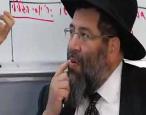 We are gratified to feature you in these pages, week after week, to espouse your message, never shying away from an opportunity to remind our readers of this truth. We, too, rejoice in your simcha, not only because we cherish your friendship, but because we cherish your message – a message that, thanks to your call and example, is being emulated throughout Klal Yisroel.
We are gratified to feature you in these pages, week after week, to espouse your message, never shying away from an opportunity to remind our readers of this truth. We, too, rejoice in your simcha, not only because we cherish your friendship, but because we cherish your message – a message that, thanks to your call and example, is being emulated throughout Klal Yisroel.
So mazel tov, Reb Yankel. Mazel tov to you, to the rosh yeshiva, rabbeim and staff at Darchei, to the talmidim, to their parents and the lay-leaders of the Darchei family, to the community which has become synonymous with the yeshiva, and, of course, to those who came before us.
By their light we walk and in their footsteps we tread.
And yes, we must remember that they, the Jews in bunkers and camps seventy years ago, who testified with their last breath that Torah would rise; they were Sunday’s true mechutanim.
As I was preparing to leave my home for the drive to Far Rockaway on Sunday, I tried explaining to a Yerushalmi Yid who had come to visit me, the importance of the celebration. He wasn’t convinced until I showed him a picture of the building. I said to him, “Git ah kook oif der binyan. Look at that building. Would you ever believe that there is Torah on that scale in America, and not only in America, but in Far Rockaway, a place you have never even heard of?”
With a glint in his Yerushalayimer eye, wizened by decades of breathing the avirah demachkim, he responded, “Ye, ye. Es iz a sheineh binyan. Es balangt in Yerushalayim. You’re correct. It is a beautiful building. It belongs being in Yerushalayim.” And then we both blurted out together, “Balt, balt, soon Moshiach will come and transport it there together with us.”
May our dedication to Torah and its ideals lead to the ultimate triumph of the kol Yaakov, bimeheirah biyomeinu. Amein.
{Matzav.com Newscenter}












A truly beautiful and well written article.
Rabbi Bender and his Yeshiva is an inspiration and is a model for all of Chinuch.
The title should be An Historic Day; generally “An” is used preceding a vowel and “A” preceding a consonant, however, in the case of Historic, An is the correct word.
A well known grammar rule says that we should use an before vowel sounds; for example, an accident, an item, an hour. We use a otherwise: a book, a hotel, a university.
Notice that we say an hour, not a hour. The choice of a or an is based upon the sound of the word, not the spelling. Hour sounds as if it starts with a vowel sound (ow); hence, we use an.
Following this rule, we would say a historic, not an historic because (for most speakers) historic doesn’t start with a vowel sound.
Words of three or more syllables that start with h are treated differently by some speakers, though. (This may be because of the tendency of some regional accents to drop initial Hs.)
Here’s another example. Which of these pairs of sentences sounds better to you?
We can’t agree on a hypothesis.
We can’t agree on an hypothesis.
A quick bit of Googling reveals that as of December 2008 the phrase a hypothesis is used on 2.22 million pages (80%), and an hypothesis on 538,000 pages (20%). Similarly, a historic gets 70% of the popular vote, and an historic only 30%.
There is a clear preference on the web in favour of a hypothesis and a historic. Even so, a significant minority uses the other form. This supports the view that both forms are widespread. Which form you use seems to be little more than a personal preference and perhaps a matter of accent.
In summary: A historic is more common in online writing, but both usages are sufficiently common to be considered correct.
are you saying that bin ladin was captured because of rabbi bender’s yeshiva? i don’t get it.
It’s wonderful to have more Torah being learned in America, but what about bringing all those yidden and all that money to building Eretz Yisrael? This is where we’ll end up when Mashiach comes!
Eretz Yisrael Yid:
There’s no need for pessimism or even room for your implied criticism.
I had the same feeling as Rabbi Lipshutz, and posted it on Monday’s article here. While there on Sunday I was reminded of our Yeshivos of yesteryear and how we are meriting Torah being rebuilt all over (especially in Eretz Yisroel, but all over). More “osios porchos bavir” have landed. Its a deeply emotional occasion.
May this special Yeshiva, together with all holy Yeshivas, continue to merit much growth and success.
It is all siyata dishmaya.
I feel that the way they , YDT , were sharing their great day with all the other local yeshivos was a very big plus. Rabbi Bender spoke about this and particlarly mentioned that we all must learn to “fargin” others. This would be a very big plus for all of us.
The other local mosdos were all very well represented and they all were being mesameach for each other.